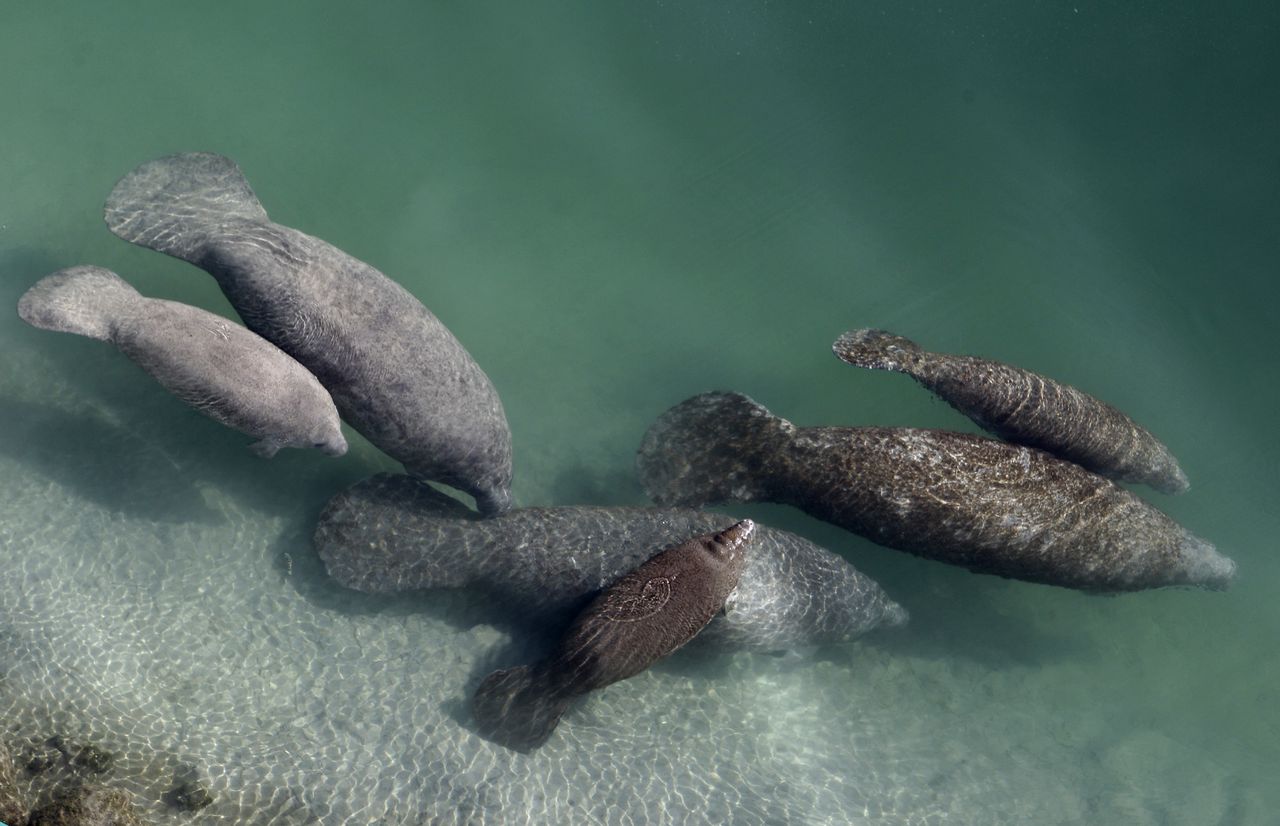Herd of manatees reportedly spotted in Panama City bayou
As the weather begins to warm, Florida manatees come out to play.
A herd of manatees, including a mother and calf, were spotted in Watson Bayou in Panama City Wednesday afternoon, according to mypanhandle.com.
The manatees could be seen playing in the water and the mother cuddling with her child, the report said.
Manatees, sometimes called sea cows, tend to be on the move once waters begin to warm, leaving the temperature-controlled springs where they spend their winters.
The Florida manatee, a subspecies of the West Indian manatee, will migrate as far west as Texas and as far north as Massachusetts during the summer, but congregate in the the warmer waters of Florida during the winter, according to the Marine Mammal Commission (MMC).
They are typically solitary creatures, traveling only with a calf or a mating herd. They are herbivores, typically weighing between 1,200 and 1,300 pounds and 10 to 13 feet in length.
Manatee sightings have become more commonplace in Panama City and Panama City Beach, according to the Panama City News Herald.
It is illegal to touch a manatee under both federal and Florida law, punishable by a fine of up to $500 and 60 days in jail.
In 2013, a Florida man was arrested after posting pictures of himself and his two children with a manatee calf, including one in which he is liting the calf partially out of the water and another in which one of his children is sitting on the calf.
The main causes of death for manatees are human-related issues, such as habitat destruction and human objects. Their slow-moving, curious nature has led to violent collisions with propeller-driven boats and ships, according to National Geographic.
West Indian manatees, including the Florida subspecies, have increased in population over the last 30 years, with the U.S. Fish & Wildlife Service downlisting them from endangered to threatened, according to the MMC.
Florida manatees are managed jointly by both the U.S. Fish & Wildlife Service and the Florida Fish & Wildlife Conservation Commission.
